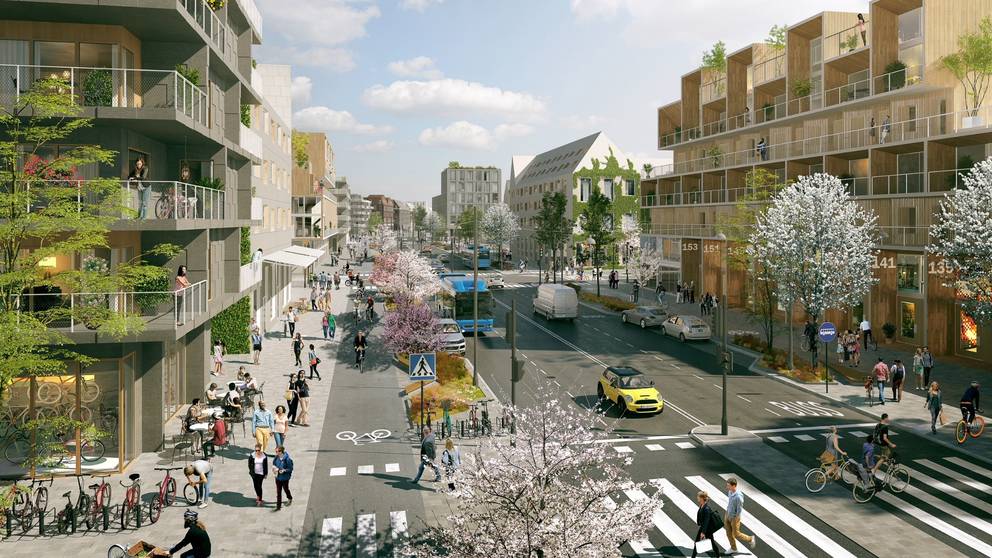Sweden’s biggest research project on Smart Streets
Two universities (KTH, Chalmers), one research institute (VTI) and three consultancies (Spacescape, White, Sweco) just got 9 Mn kronor (1 Mn USD) from VINNOVA Sweden’s Innovation Agency to research on new models for smart streets.
Our cities consist of 20-30% streets, a gigantic infrastructure that must be maintained and developed. Five mega trends will affect the city’s streets in the future and require new ”smart” solutions.
- Urbanization places higher demands on street´s functionality such as quality of life, safety and use with increased focus on efficient just transportation such as walking, cycling and public transport as well as energy efficient and climate-friendly freight and waste management.
- Digitalization creates opportunities for autonomously shared electrified transport of goods and people as well as new mobility services and new street demands.
- Electrification of buildings and vehicles places new demands on the electricity network’s capacity and infrastructure, as well as on the street environment with charging stations and maintenance.
- Climate change means that streets need to be adapted for varying and difficult water, snow / ice and heating conditions, as well as contributing ecosystem services.
- Segregation must decrease, and streets can help integrate the city through improved links both within and between urban neighborhoods.
The Smart Streets project aims at developing models for multifunctional streets that can be used for reconstruction and new construction, meeting the challenges of future urbanization, digitization, electrification, segregation and climate change.
The project will:
- Gather knowledge and experience on the multifunctionality of different street types and technical frameworks for transport, energy, ICT, VA, tidal, ecosystem services, city life, operation, maintenance, focusing on newly built or newly rebuilt streets.
- Develop models and typing solutions for the futures Smart Streets in consultation with state, county, municipal, consultancies, construction companies, transport companies, property owners, and user focus groups.
- Develop a street functionality index and evaluate the street models on technical and functional sustainability
- Create a driving simulator that allows you to drive, walk and cycle in developed models, and implement workshops with this as a tool
- Develop a Design Guide for Smart Streets in Swedish urban areas that cover renovation and newbuilding processes and list possible test beds in Swedish urban areas.
The project involves a large number of actors, public and private, so an important purpose of the project is also better collaboration and understanding in street development, between engineers, architects, planners, businessmen, economists and users.
Questions:
Alexander Ståhle, School of Architecture KTH
alexander.stahle@spacescape.se
+46 70 699 53 10

